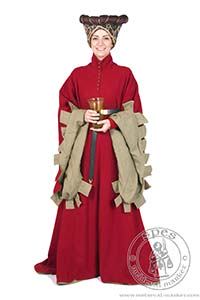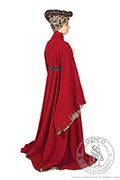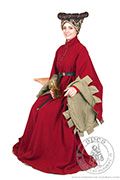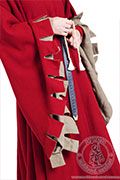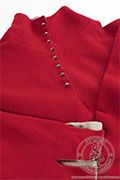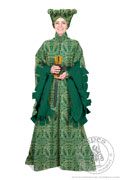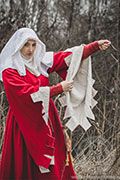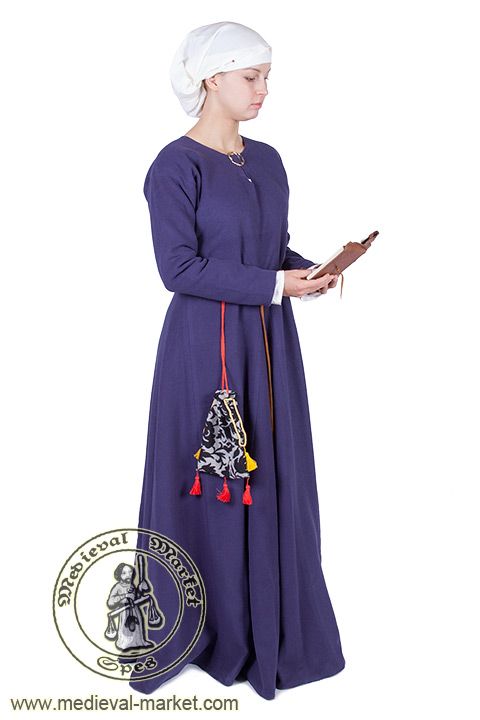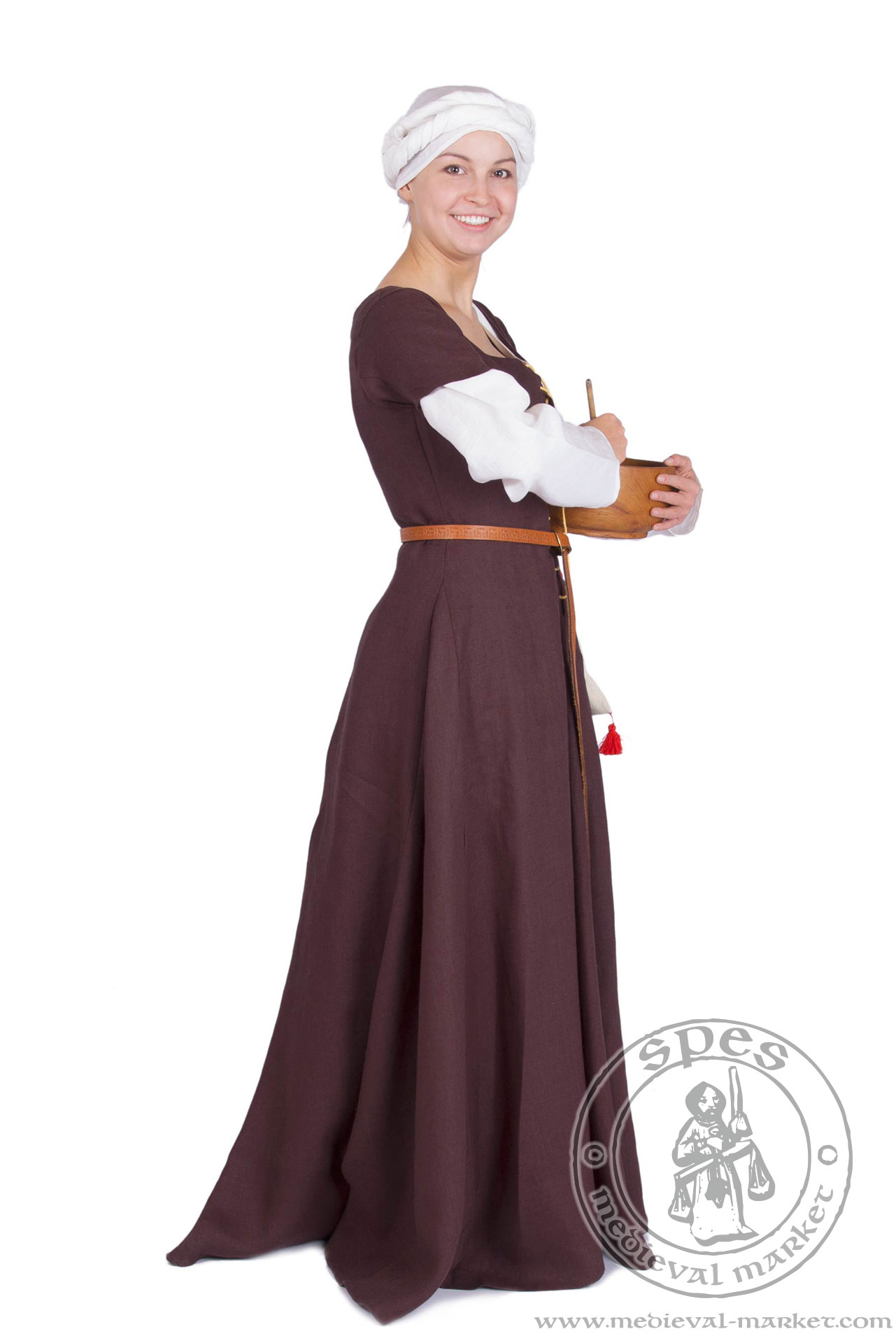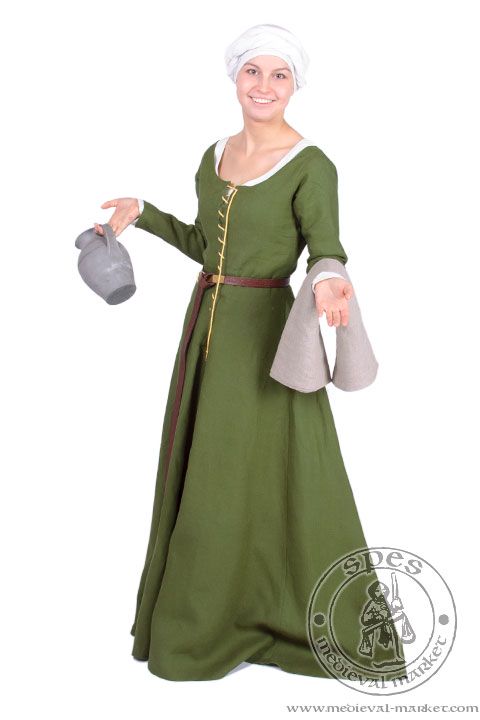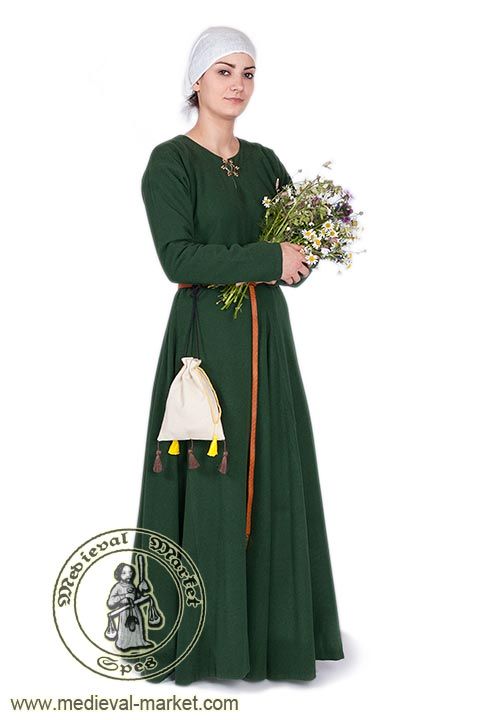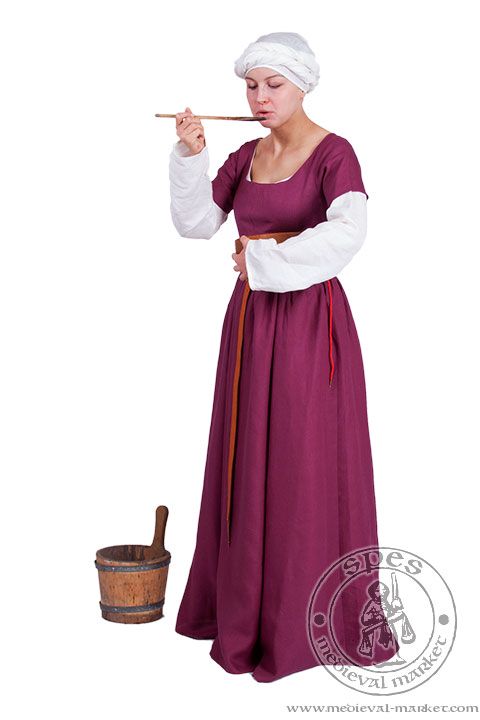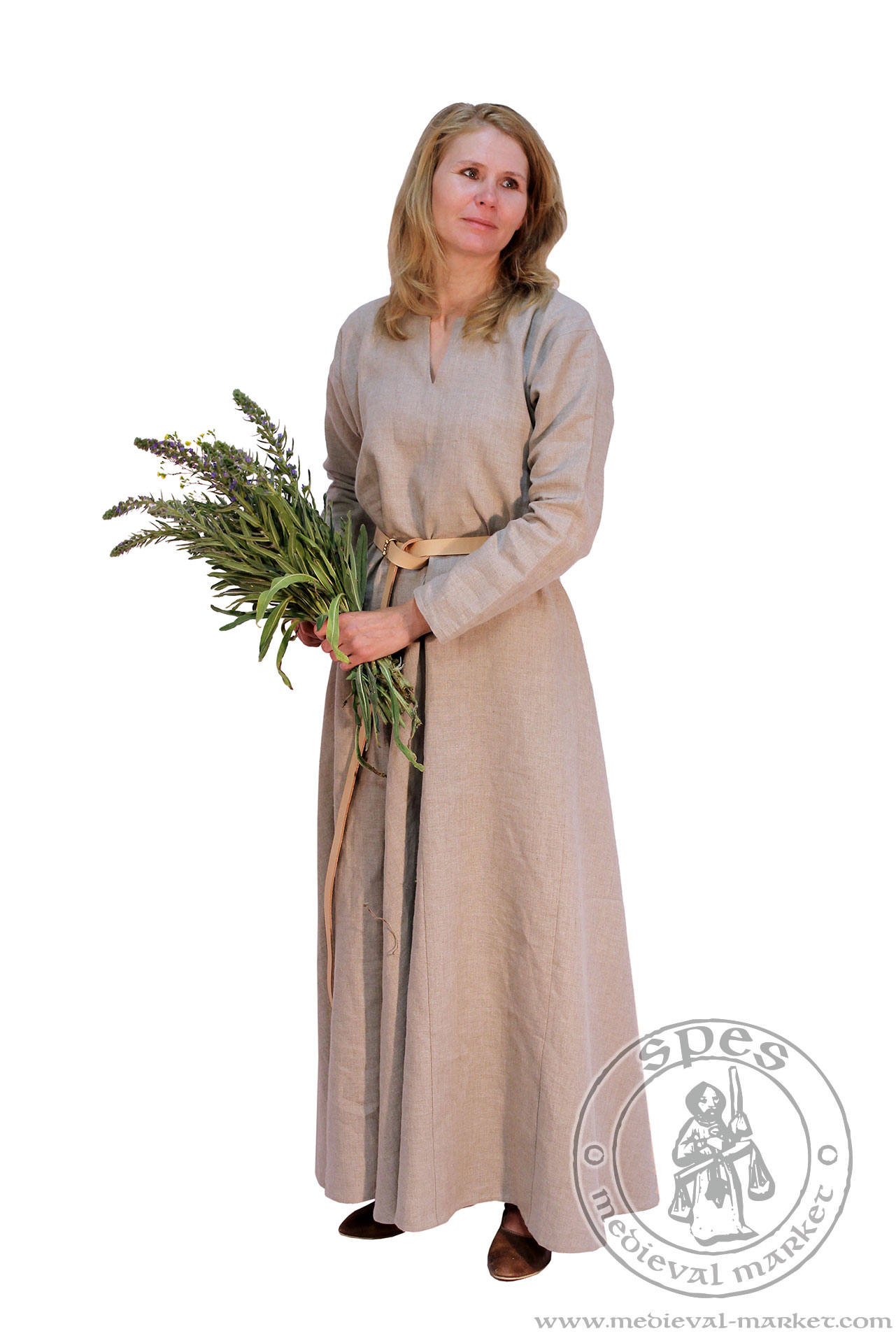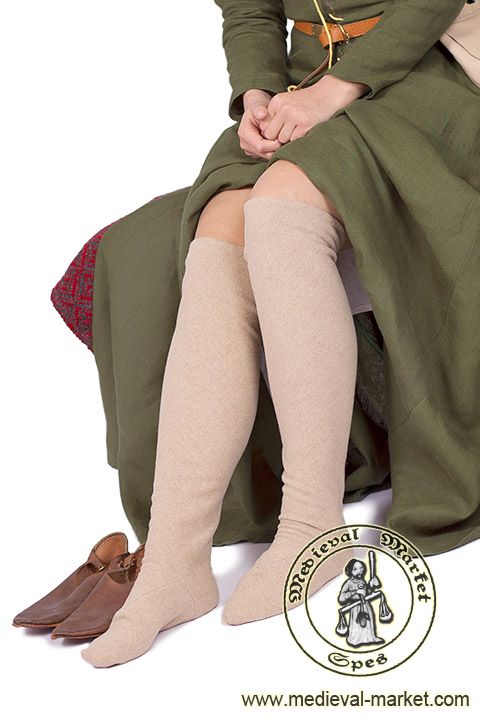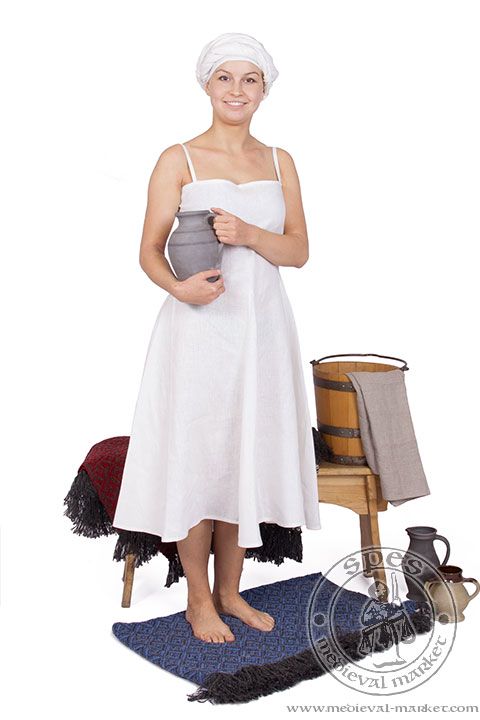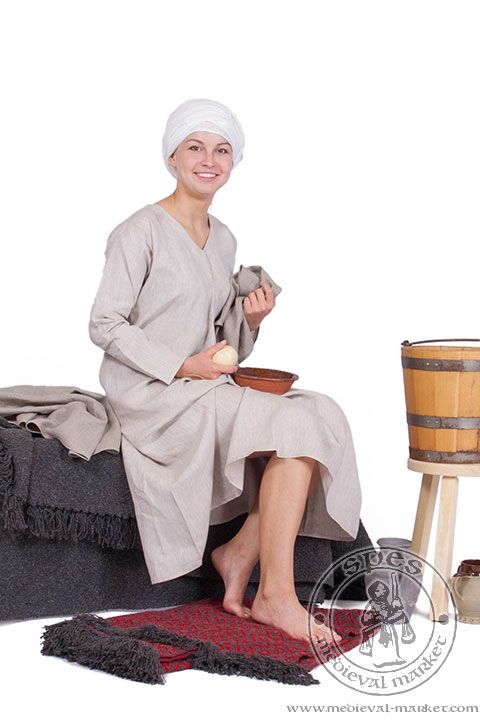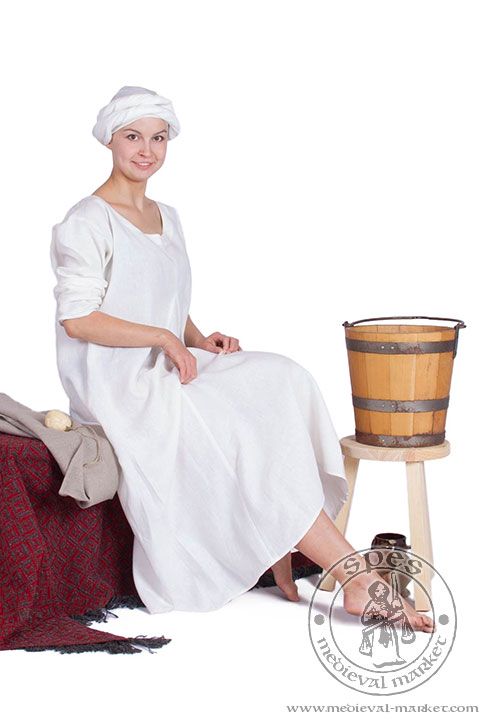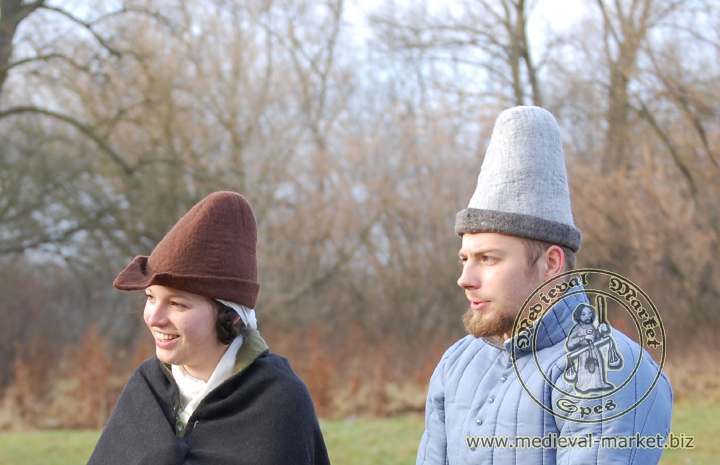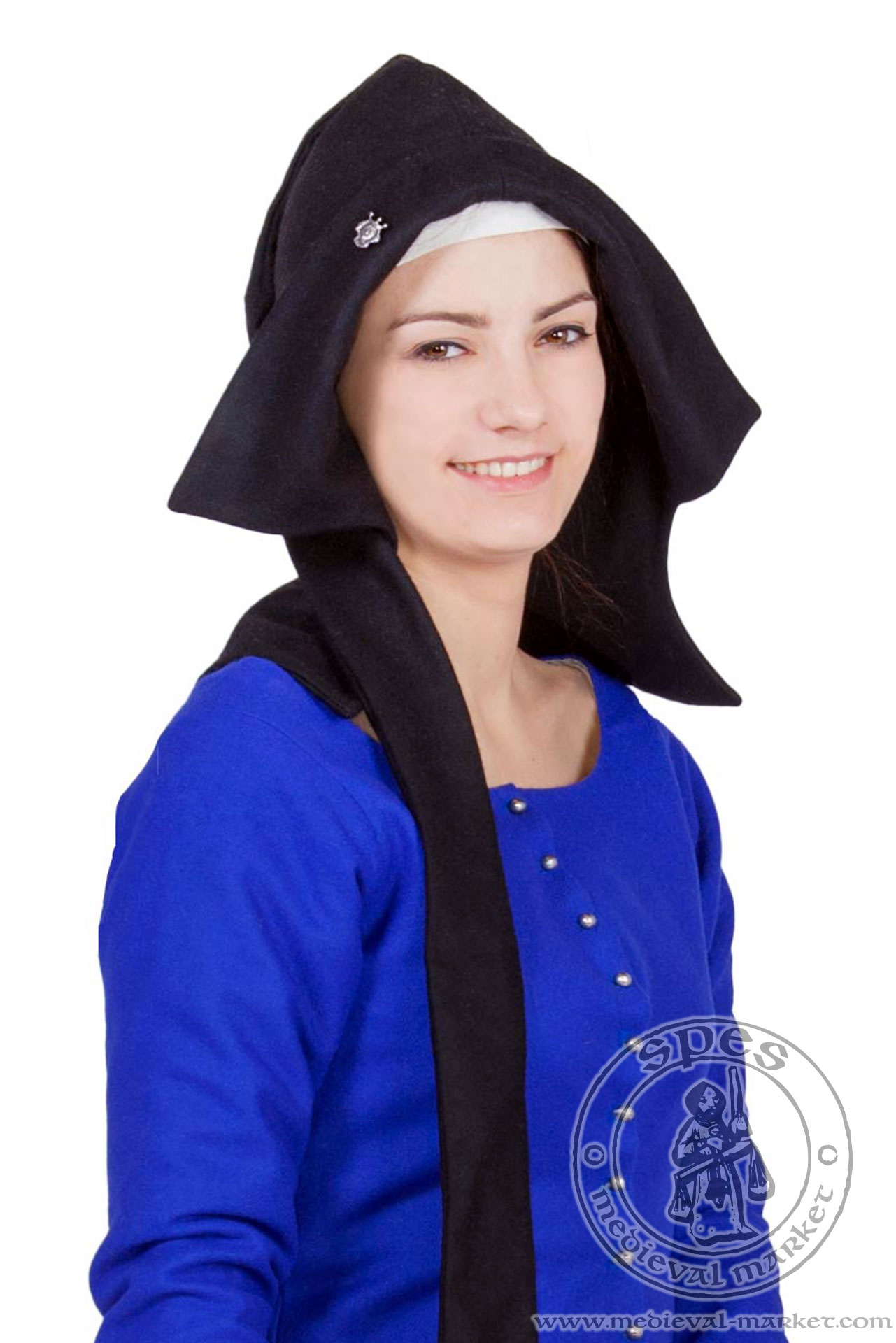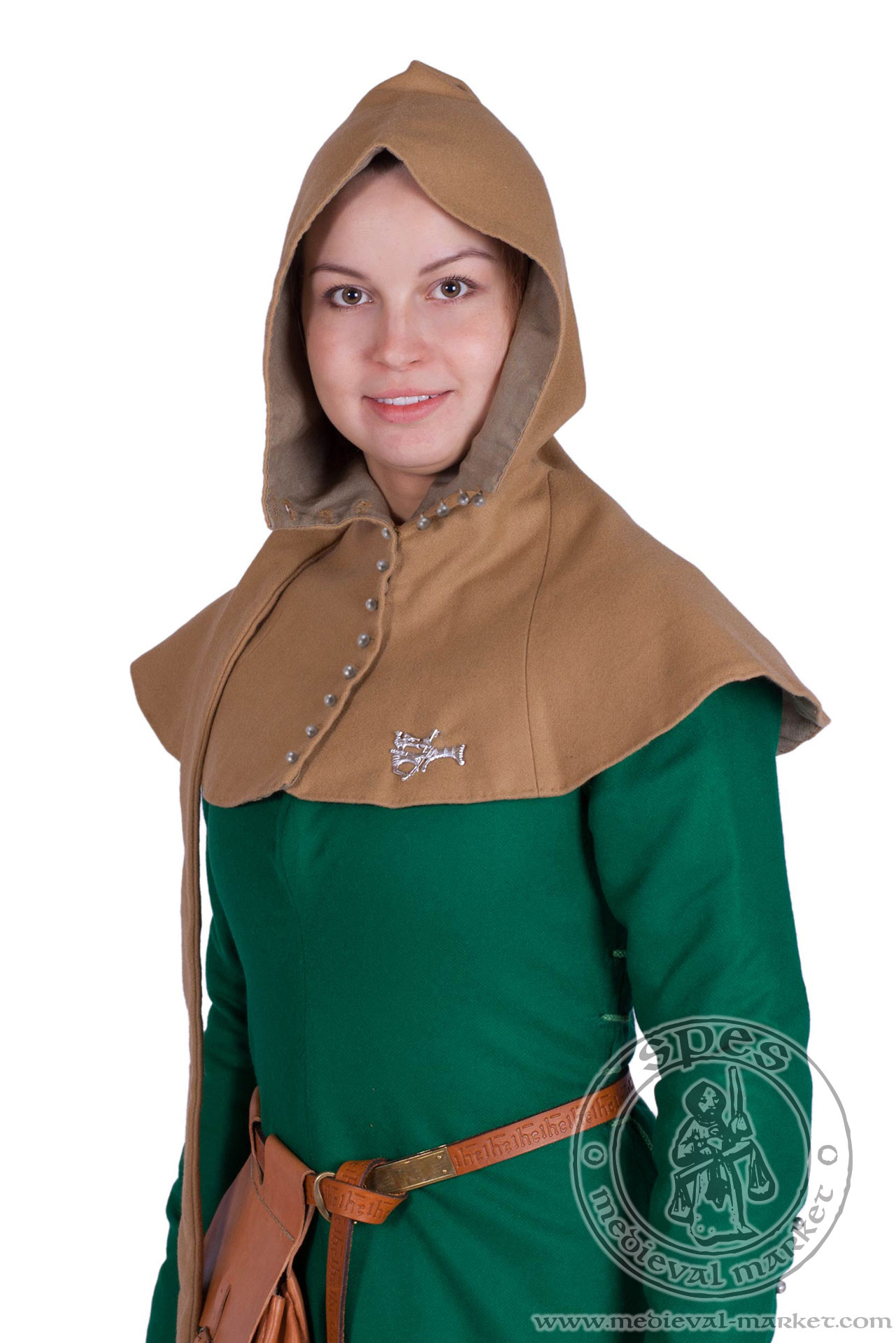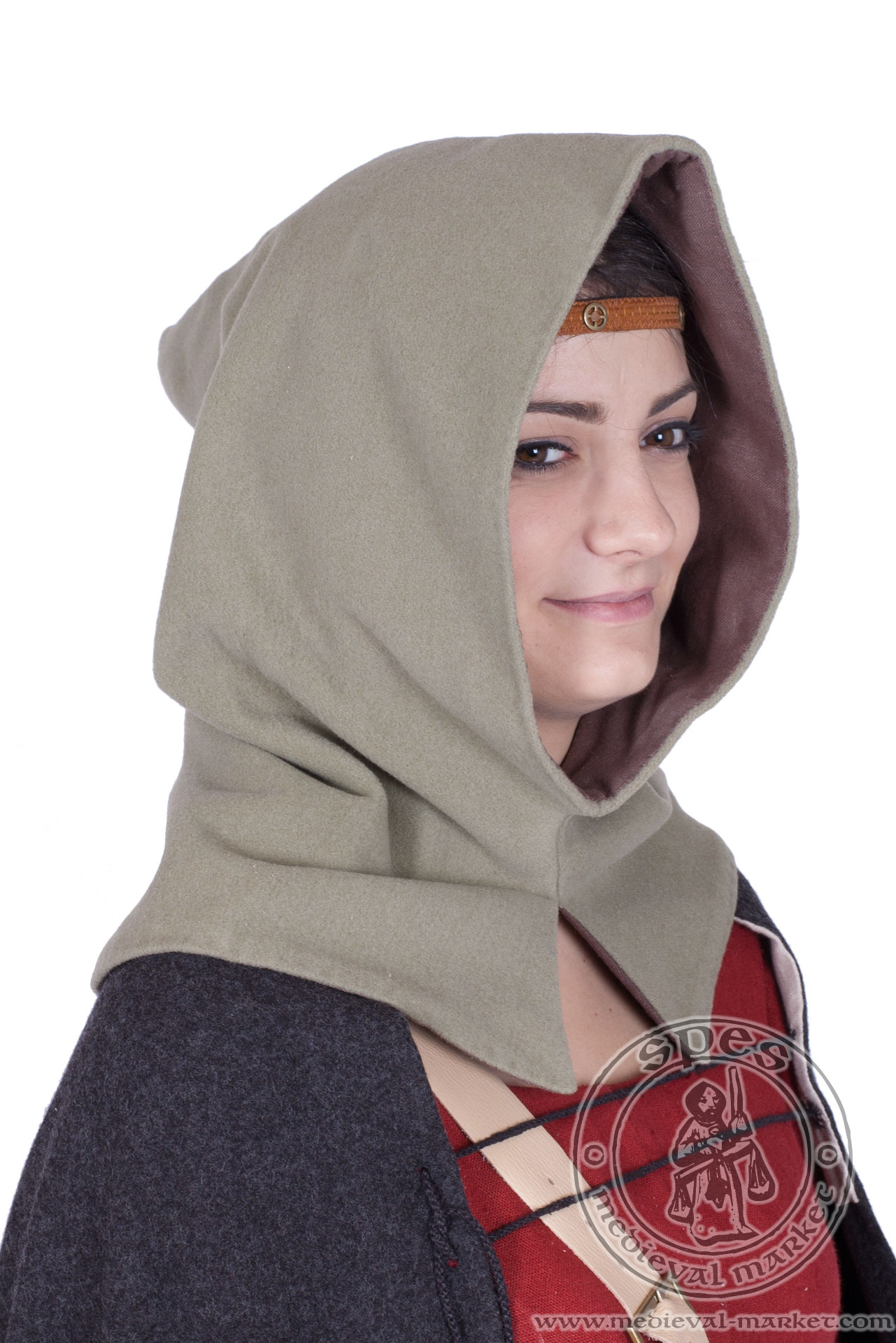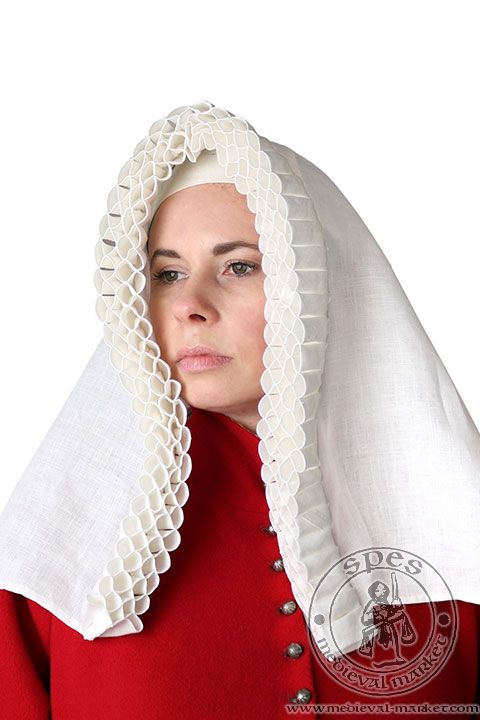If you wish to adjust your cookie preferences for this website, you can do so using your browser settings.



Category: Female Clothing > outer garments
Lady's Houppelande type 2
Lady's Houppelande type 2
Century: XIV, XV| CODE | Material |
Standard
|
Price | |
| WMWR0089 | Wool | Hand-made | 550.00 EUR |
|
| WMWS0088 | Wool | Mixed | 380.00 EUR |
|
* Please write the extra wishes in the place 'additional information' at the end of the order.
** the price of a material button: 1,5 euro
the price of a moulded button: 1,5 euro
Lowest price in the last 30 days
See how to place an order for several people
Houppelande (or houpelande, cipriana, goun) is a medieval representative outer clothing with folds and open sleeves. This medieval dress is put on through head and buttoned up under the neck. It has 8 tin buttons. There is an option of changing the buttons on other from our assortment, or on the fabric buttons.
We make our houpelande from wool with linen lining. You can choose the color of both wool on the outside, and lining on the inside. In standard, the length of these women's court gowns reach the ground.
There are also two standards of finishing this medieval cipriana. In high standard all of it is hand-sewn. In medium standard the seams inside this cioppa are machine sewn, while the visible seams on the outside — hand-sewn.
Houpelande — the basis of a court clothing
Medieval houpelande was a court, representative outer clothing. This medieval gown gained its greatest popularity between the 2nd half of 14th century and the middle of 15th century. Pellanda was worn both by men and women. The length of a female houpelande always reached the ground and sometimes was enriched with a train. Male version of a dress could be shorter.
Houpelande is another important part of women's medieval clothing from our shop. First thing to put directly on the body was a chemise. Next one was an under dress, and then this historical outer gown.
Art from the Middle Ages present women wearing an houppelande during horse riding. The example of this historical gown can be found in the former illustrated manuscript. It is titled “Les Très Riches Heures du duc de Berry”.
Houppelande is a court outer garment, usually very spacious and with spacious sleeves, often richly decorated. It is typical for the late 14th and the early 15th centuries.






 Male clothing
Male clothing Accessories
Accessories Furniture
Furniture Tents
Tents Armament
Armament HMB Line
HMB Line Miscellaneous
Miscellaneous Rent
Rent In stock
In stock Special Offers
Special Offers Search
Search Your Account
Your Account About us
About us Sizing
Sizing How to buy
How to buy Blog
Blog Links
Links Events
Events
